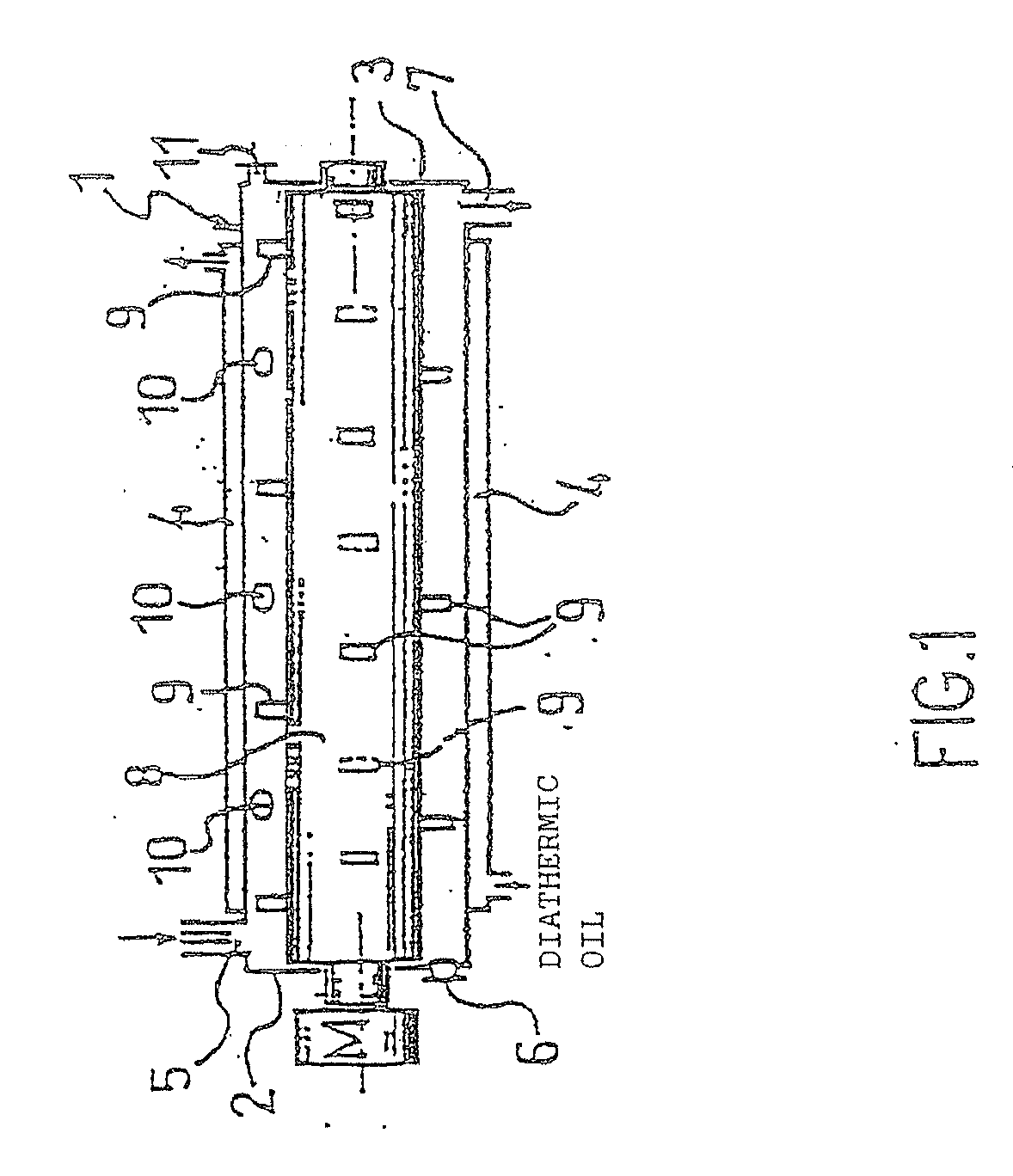Product for the prevention and the treatment of grapevine infections and method of preparation thereof
a technology for grapevine infections and products, applied in the direction of biocide, plant growth regulators, plant ingredients, etc., can solve the problems of affecting the quality of grapevine production, affecting the microbiological and enzymatic composition of the soil, and affecting the acidity of the soil, so as to achieve the elimination and/or damage of heat-sensitive effects
- Summary
- Abstract
- Description
- Claims
- Application Information
AI Technical Summary
Benefits of technology
Problems solved by technology
Method used
Image
Examples
example 1
[0050] Lees obtained from the first filtering in a winemaking process was provided, exhibiting a light purple color, a consistency similar to honey and a pH of 2.72. Initial humidity was 89.2%.
[0051] A continuous flow of such lees was fed, with a flow rate of 100 kg / h in a turbo-concentrator having a cylindrical tubular body 1 having an inner diameter of 300 mm and having a bladed rotor 8 made to rotate at 700 rpm, while the temperature of the inner wall of the cylindrical tubular body 1 was being maintained at 220° C.
[0052] At the same time and co-currently with such lees flow, a continuous flow of 50% KOH was fed into the turbo-concentrator through the inlet openings 6 and 10, with a flow rate of 4.5 kg / h.
[0053] Starting from the inlet of the turbo-concentrator the lees flow is immediately mechanically dispersed into small particles, which are immediately centrifuged against the inner wall of the turbo-concentrator, where they form a dynamic, tubular thin layer.
[0054] In the m...
example 2
[0056] The product obtained according to example 1 was diluted with water, mixing a part of product with ten parts of water and it was used to treat the grapevine plants.
[0057] The product thus diluted was applied by spraying on 70 grapevine plants arranged in 5 rows in a vineyard comprising approximately 1000 grapevine plants. The remaining plants were then treated with a conventional synthetic plant protection product (Metiram).
[0058] The treatments were carried out during the period between the beginning of March and the end of July, each time applying a quantity of 100 g of diluted product per plant. The same number of applications as those of the conventional plant protection product were carried out, at the same times.
[0059] At the end of the treatment none of the 70 plants treated with the product according to the invention exhibited signs of downy mildew attack, whereas 18% of the plants treated with the Metiram showed obvious signs of downy mildew infestation.
[0060] Wit...
PUM
 Login to View More
Login to View More Abstract
Description
Claims
Application Information
 Login to View More
Login to View More - R&D
- Intellectual Property
- Life Sciences
- Materials
- Tech Scout
- Unparalleled Data Quality
- Higher Quality Content
- 60% Fewer Hallucinations
Browse by: Latest US Patents, China's latest patents, Technical Efficacy Thesaurus, Application Domain, Technology Topic, Popular Technical Reports.
© 2025 PatSnap. All rights reserved.Legal|Privacy policy|Modern Slavery Act Transparency Statement|Sitemap|About US| Contact US: help@patsnap.com

